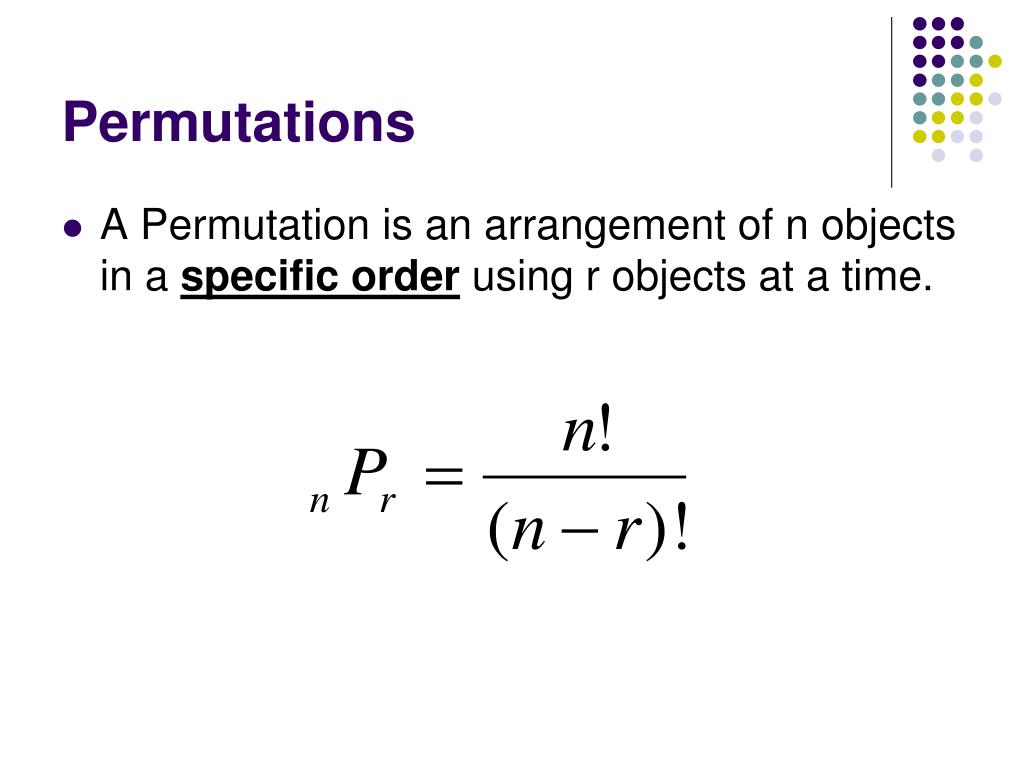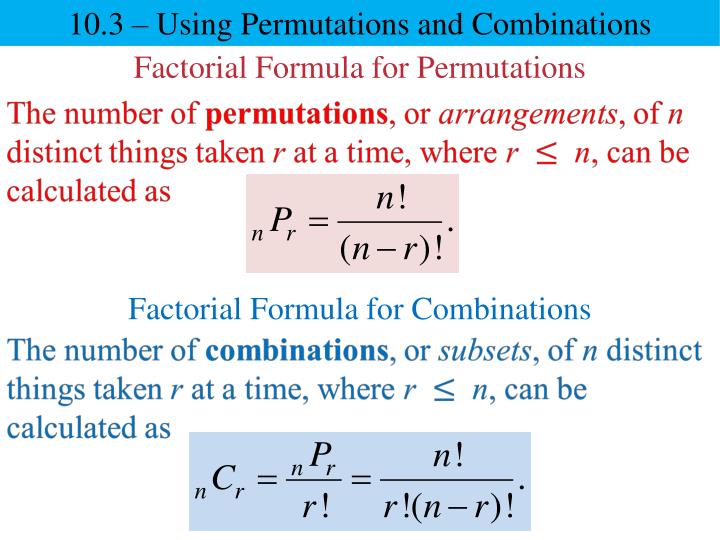

Returns the number of permutations for a given number of objects that can be selected from number objects. This article describes the formula syntax and usage of the PERMUT function in Microsoft Excel.
#TO PERMUTE FOR MAC#
7.Excel for Microsoft 365 Excel for Microsoft 365 for Mac Excel for the web Excel 2021 Excel 2021 for Mac Excel 2019 Excel 2019 for Mac Excel 2016 Excel 2016 for Mac Excel 2013 Excel 2010 Excel 2007 Excel for Mac 2011 Excel Starter 2010 More. Interestingly, if we have repeated elements, the algorithm will skip over them to find the next in the series. If the input is the greatest, then the array is unchanged and is returned. This algorithm returns the next lexicographic permutation. Find largest index such that The lexicographic order algorithm, formulated by Edsger W.Dijkstra in A Discipline of Programming (1976), can be formulated as follows: If two people had the same last name, then the ordering function would look at the first name. The ordering function would look at the last name first. There would be two fields, first name and last name. For example, suppose we had an array of structures representing peoples’ names. If a set of functions is given instead of the usual >, <, and = operators (or overridden in object-oriented languages), the array can be an arbitrary object. We can define these functions in any way appropriate for the data type. The key to establishing lexicographic order is the definition of a set of ordering functions (such as, , and ). Lexicographic order is a generalization of, for instance, alphabetic order. For our case of, when the first three p elements are zero, then we have developed all permutations. Here we can see how the lower (to the left) permutations develop first. Here is an example of the development of the p matrix with the permutations: All permutations are formed of the ‘lower’ elements until the next element is considered. We use this array to keep track of the generation process. Each represents the counting base: is also zero, is base 2, is base 3, etc. The primary index controller array in the QuickPerm algorithm above is p, which controls iteration and the upper index boundary for variable. We can consult the QuickPerm site for the variations and implementations, but we’ll present the pseudo-code here for one of the versions (countdown QuickPerm). QuickPerm, also based on swapping and inspired by Heap sort, is one of the most efficient. Though Heap’s algorithm is traditionally the permutation algorithm of choice, there are other more recent algorithms. In each iteration, the algorithm will produce all the permutations that end with the current last element. If is even, then swap the th element (in the loop).If is odd, swap the first and last element.While looping over the n-1 elements, there is a (mystical) step to the algorithm that depends on whether is odd or even. Then the (n-1)! permutations of the first n-1 elements are adjoined to this last element.

The algorithm basically generates all the permutations that end with the last element. The principle of Heap’s algorithm is decrease and conquer.

We see that the advantage of this algorithm, as opposed to the previous algorithm, is that we use less memory. This method is a systematic algorithm, which at each step chooses a pair of elements to switch in order to generate new permutations. It produces every possible permutation of these elements exactly once. This algorithm is based on swapping elements to generate the permutations. One of the more traditional and effective algorithms used to generate permutations is the method developed by B. We have to rely on other methods of finding a password, such as guessing the owner’s dog’s name or “qwerty.” 2.3. It would take us several lifetimes of the universe to try to figure out the key.

For instance, the standard 256-encryption key has 1.1 x 10 77 combinations of zeros and ones. For example, if we were to write a program to generate these permutations recursively (see below), we would quickly run out of memory space.Īlthough this is bad news for those of us who want to generate all the possible permutations, it is good news for encryption. Even if we could find a dealer in Las Vegas who could shuffle the cards once every nanosecond, he would still not even come close to all the possible combinations before the end of the universe.įurthermore, the amount of time it takes us to generate all permutations is not our only limitation. The age of the universe is approximately 10 13.813 years old.


 0 kommentar(er)
0 kommentar(er)
